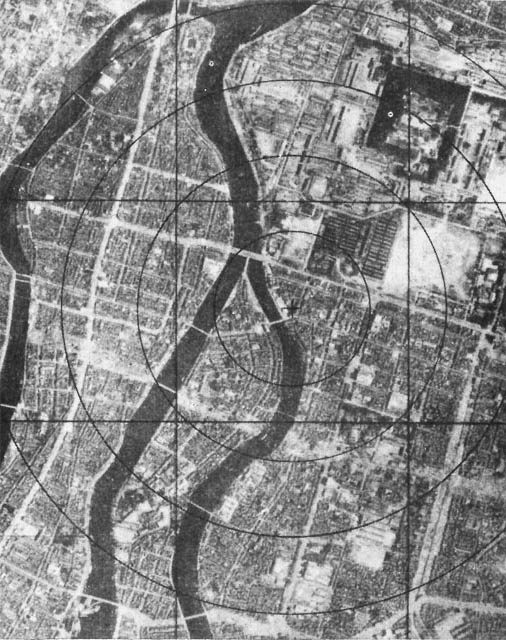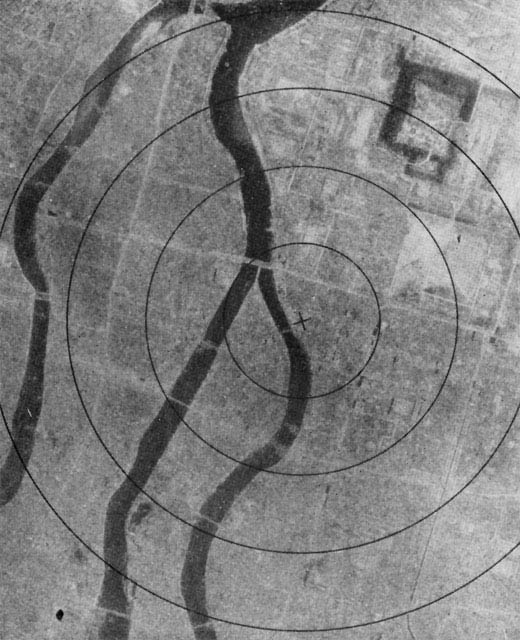Fire in the sky 1 [Issue no. 1]
 •
by
•
by DradX
Recently I've read an article from BastovanSurcinski, regarding the fact that there is really nothing here to do if you are so far behind the players that spend money on packs, and there is even nothing here to read.
So in that manner I decided to break the monotony, to write something besides the usual "down with the dictatorship" or "miss of the month". I will be posting educational articles and I'll try to make it interesting for all of you, combining history, culture and science. And I will do so every seven days.
For the first topic I decided to write something about Japan. It doesn't matter if we are not all true real life Japanese, most of us anyways is not, but we are all residents of eJapan and in that manner this first article will be about our eCountry. But I will not write about some random facts. This article will be dedicated to the saddest moments in the history of Japan.
The War

The attack on Pearl Harbor was a surprise military strike by the Imperial Japanese Navy Air Service against the United States naval base at Pearl Harbor on the morning of December 7, 1941, which led to the United States' entry into World War II. It was a preventive action, intended to keep the U.S. Pacific Fleet from interfering with military actions they planned in Southeast Asia. The base was attacked by 353 Imperial Japanese fighter planes, bombers, and torpedo planes in two waves, launched from six aircraft carriers. All eight U.S. Navy battleships were damaged, with four sunk. 2,403 Americans were killed and 1,178 others were wounded. The following day, December 8, the United States declared war on Japan.
Iron and Blood

By mid-1942, the Japanese found themselves holding a vast area from the Indian Ocean to the Central Pacific, but lacking the resources to defend or sustain it. the element of surprise, present at Pearl Harbor, was now lost due to the success of Allied codebreakers who had discovered the next attack would be against Port Moresby. If it fell, Japan would control the seas to the north and west of Australia and could isolate the country. The carrier USS Lexington under Admiral Fletcher joined USS Yorktown and an American-Australian task force to stop the Japanese advance. The resulting Battle of the Coral Sea, fought in May 1942, was the first naval battle in which ships involved never sighted each other and only aircraft were used to attack opposing forces. Although Lexington was sunk and Yorktown seriously damaged, the Japanese lost the carrier Shōhō, and suffered extensive damage to Shōkaku and heavy losses to the air wing of Zuikaku, both of which missed the operation against Midway the following month. Although Allied losses were heavier than the Japanese, the attack on Port Moresby was thwarted and the Japanese invasion force turned back in a strategic victory for the Allies. In May, Allied codebreakers again discovered Yamamoto's next move: an attack on Midway Atoll. It was hoped the attack would lure the American carriers into a trap,leading to the destruction of United States strategic power in the Pacific. This battle resulted in the U.S. Navy inflicting a devastating defeat on the Japanese Navy. Four Japanese fleet aircraft carriers, the Akagi, Kaga, Hiryu and Soryu, were sunk, along with the loss of hundreds of Japanese aircraft, losses that the Japanese would never be able to replace. The U.S. lost the aircraft carrier USS Yorktown (CV-5), along with a number of its carrier- and land-based aircraft that were either shot down by Japanese forces or bombed on the ground at the airfields. The Battle of Midway was, by most accounts, the beginning of the end of the Japanese Navy's control of the Pacific Ocean.

The Battle of Iwo Jima (19 February – 26 March 1945) was a major battle in which the United States Marine Corps landed on and eventually captured the island of Iwo Jima from the Japanese Imperial Army during World War II. The American invasion, designated Operation Detachment, had the goal of capturing the entire island, including the three Japanese-controlled airfields (including the South Field and the Central Field), to provide a staging area for attacks on the Japanese main islands. This five-week battle comprised some of the fiercest and bloodiest fighting of the War in the Pacific of World War II. Japanese combat deaths numbered three times the number of American deaths, although uniquely in the Pacific War, American total casualties (dead and wounded) exceeded those of the Japanese. Of the 21,000 Japanese soldiers on Iwo Jima at the beginning of the battle, only 216 were taken prisoner, some of whom were captured because they had been knocked unconscious or otherwise disabled. The majority of the remainder were killed in action, although it has been estimated that as many as 3,000 continued to resist within the various cave systems for many days afterwards, eventually succumbing to their injuries or surrendering weeks later.
Annihilation

All those events led to Japans defeat in this war. Nonetheless Japan refused to surrender and the war would go on until Japan was completely conventionally defeated. But there were two problems in classic military reasoning. First was the inevitable loss of American troops, and the cost of so many lost lives was too high for USA high command. Second, and bigger problem for USA was the Soviet Red Army that was closing in on Japan. America genuinely recognized that only other force that could stand up to it was USSR, so it was necessary to ensure that Japan, after the war, stays in American sphere of influence. The result of such politics was the usage of atomic bombs on Hiroshima and Nagasaki.
The Tokyo control operator of the Japan Broadcasting Corporation noticed that the Hiroshima station had gone off the air. He tried to re-establish his program by using another telephone line, but it too had failed. About 20 minutes later the Tokyo railroad telegraph center realized that the main line telegraph had stopped working just north of Hiroshima. From some small railway stops within 16 km (10 mi) of the city came unofficial and confused reports of a terrible explosion in Hiroshima. All these reports were transmitted to the headquarters of the Imperial Japanese Army General Staff. Military bases repeatedly tried to call the Army Control Station in Hiroshima. The complete silence from that city puzzled the General Staff; they knew that no large enemy raid had occurred and that no sizable store of explosives was in Hiroshima at that time. A young officer was instructed to fly immediately to Hiroshima, to land, survey the damage, and return to Tokyo with reliable information for the staff. It was felt that nothing serious had taken place and that the explosion was just a rumor.


The staff officer went to the airport and took off for the southwest. After flying for about three hours, while still nearly 160 km (100 mi) from Hiroshima, he and his pilot saw a great cloud of smoke from the bomb. After circling the city in order to survey the damage they landed south of the city, where the staff officer, after reporting to Tokyo, began to organize relief measures. Tokyo's first indication that the city had been destroyed by a new type of bomb came from President Truman's announcement of the strike, sixteen hours later.
After the Hiroshima bombing, Truman issued a statement announcing the use of the new weapon. He stated, "We may be grateful to Providence" that the German atomic bomb project had failed, and that the United States and its allies had "spent two billion dollars on the greatest scientific gamble in history—and won". Truman then warned Japan: "If they do not now accept our terms, they may expect a rain of ruin from the air, the like of which has never been seen on this earth. Behind this air attack will follow sea and land forces in such numbers and power as they have not yet seen and with the fighting skill of which they are already well aware."
The Japanese government did not react.
Soviet Foreign Minister Vyacheslav Molotov informed Tokyo of the Soviet Union's unilateral abrogation of the Soviet–Japanese Neutrality Pact on August 5. At two minutes past midnight on August 9, Tokyo time, Soviet infantry, armor, and air forces had launched the Manchurian Strategic Offensive Operation. Four hours later, word reached Tokyo of the Soviet Union's official declaration of war. The senior leadership of the Japanese Army began preparations to impose martial law on the nation, with the support of Minister of War Korechika Anami, in order to stop anyone attempting to make peace.
On August 7, a day after Hiroshima was destroyed, Dr. Yoshio Nishina and other atomic physicists arrived at the city, and carefully examined the damage. They then went back to Tokyo and told the cabinet that Hiroshima was indeed destroyed by an atomic bomb. Admiral Soemu Toyoda, the Chief of the Naval General Staff, estimated that no more than one or two additional bombs could be readied, so they decided to endure the remaining attacks, acknowledging "there would be more destruction but the war would go on". American Magic codebreakers intercepted the cabinet's messages.

Nagasaki was bombed three days after Hiroshima.
The Aftermath

Within the first two to four months of the bombings, the acute effects of the atomic bombings killed 90,000–146,000 people in Hiroshima and 39,000–80,000 in Nagasaki; roughly half of the deaths in each city occurred on the first day. During the following months, large numbers died from the effect of burns, radiation sickness, and other injuries, compounded by illness and malnutrition. In both cities, most of the dead were civilians, although Hiroshima had a sizable military garrison.
Japan announced its surrender to the Allies on August 15, six days after the bombing of Nagasaki and the Soviet Union's declaration of war. On September 2, the Japanese government signed the instrument of surrender, effectively ending World War II. The ethical justification for the bombings of Hiroshima and Nagasaki is still debated to this day, mainly because more than a hundred thousand civilians were killed.
May such things never happen again...
And this is the end of this first article. The story about Hiroshima and Nagasaki will continue in next issue, where I will write about the physics behind nuclear bombs dropped on those cities. As a future electrical engineer, it is the topic I am really familiar with.
Enjoy the story, vote, share and endorse(if you really really like it 😃
)


Comments
copypasta
Yup, some part is, some is my own writing. But it is still way better than all your "we want democracy" articles combined.
PRVI!
One Bogdan after another... 🙂
v
good article, keep on doing this.
do not be stressed with some comments: haters gonna hate whatever you do
o7
\o/